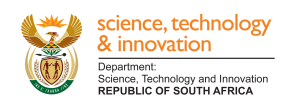Reducing the effects of climate change? Scientists and Engineers may hold the answers: Michael Bodunrin
How did human beings progress through the historical Stone Age to the Bronze Age, and beyond? The driving force has been technological advancements. Over the past centuries, humans have made many scientific breakthroughs that have led to successive technological advancements. The desire to make living more comfortable has been the impetus for these consistent breakthroughs.
Think about transport and how we have moved from relying on animals to move from place to place, to the array of options we have now. Think about the impact of internet and cell phones on our lives. Improvements in the health sector have helped to curtail the rapid spread of dreadful diseases like the Ebola virus, and the continuous mechanisation of agricultural processes have also helped to feed the ever increasing population of the world. Outlining all the benefits of technological advancements would be an extensive exercise. However, it is noteworthy to mention that these benefits wouldn’t have been realised without scientists and engineers.
Although technological advancements are of various kinds, they have largely been categorised and tracked through the major industrial revolutions experienced by mankind. To date, three major industrial revolutions have been recorded, but the fourth (Industry 4.0) is now emerging. Over a long period of three industrial revolutions, the world has focussed on the positive outcomes of technological advancements. Consequently, it was difficult to accept the concept of man-made climate change when it was mentioned by Al Gore and the United Nation’s Intergovernmental Panel on Climate Change (IPCC) in 2007.
Climate change is the consequence of technological advancements we have all enjoyed. One may wonder why it was difficult to accept the negative outcome of technological advancements when it was very easy to accept one of the fundamental laws governing the universe – “for every action, there is an equal and opposite reaction”- Newton’s third law of motion. This law influenced virtually all mechanical based inventions from the first industrial revolution to date. We have forced our natural and human resources to accommodate our own advantage, we should naturally expect an “opposite reaction” even if it is difficult to tell if the magnitude of the reaction will be equal or not.
According to several reports from scientists, human activity has caused global warming and climate change, resulting in increasing temperatures, rising sea levels and a range of other impacts. This threatens every aspect of human endeavour, including: water supply, infrastructure, public health, coastal habitats and food supply, to mention a few. The three industrial revolutions thrived on the burning of fossil fuels in order to meet the ever-increasing energy demand. Therefore, the emission of greenhouse gases, mainly methane and carbon dioxide, was inevitable. Some experts have said the effects of climate change will be worse in poor and developing countries, regardless of the amount of their relatively smaller contribution to greenhouse gas emissions. It appears the extinction of some living things is imminent should the issues of human-driven climate change not be addressed.
To prevent our own extinction, questions naturally arise. Are there solutions to the challenges posed by climate change that human activities have caused? How do we limit or possibly reverse the effects of climate change and still continue to enjoy the benefits of technological advancements? Are scientists and engineers capable of reducing or totally eliminate the effects of climate change especially with the fourth industrial revolution approaching?
As an engineer, I would take a very optimistic position because the arrival of the fourth industrial revolution comes with new opportunities that scientists and engineers can take advantage of. These opportunities would explore new technologies that will reduce or totally eradicate emissions during power generation, transportation, food processing, manufacturing and construction of buildings.
Scientists and engineers are now exploring nuclear power as an alternative to fossil fuel in power generation. Engineers have now shown that the possibility of generating power from nuclear energy through a fusion process is not only possible but safe. The by-product of the fusion process is helium which is an inert gas. Researchers have reported new materials that can be used to develop alternative batteries which are 1,000 – 10,000 better than most commercially available batteries and supercapacitors. These new batteries take less time to charge. This means emissions from the transportation industry which accounts for about 23% of the global emission can be reduced, since automobiles will be powered electrically rather than using petrol and diesel.
Nearly 25% of global emissions are contributed by the meat processing industry. Scientists have successfully produced the first plant based meat and if widely accepted and consumed, emissions from food processing industries will reduce significantly.
Manufacturing of goods for daily human needs contributes about 30% of global emissions, since these manufacturing processes can’t be stopped. It is important that emissions from these processes are treated and made at least environmentally friendly. In response to this challenge, engineers are now able to remove one ton of carbon dioxide from air everyday through a process called carbon capture, and they are converting it to fuel.
The need for heating, cooling and powering of buildings contributes about 20% to global emissions. Engineers are now developing mobile phone apps, low-cost monitoring devices and the internet of things (IoT) to monitor and reduce emissions. Scientists and engineers are now exploring space technology to also tackle the challenge of climate change. MethaneSAT is due to be launched in a year’s time and it will help track emissions anywhere on the planet and the data will be accessible to everyone for the monitoring of emissions and providing insight regarding reduction possibilities. It is possible to spot where emissions are difficult to track today. About two satellites (TROPOMI and GHGSAT) are already in space monitoring emissions, since 2017.
While it appears that scientists and engineers are responsible for the climate change which is plaguing the earth. The possibilities of reversing the effects of climate change through technological advancements make them even more responsible and dependable.
About the author
Michael is currently an AESA-RISE postdoctoral fellow hosted by the School of Chemical and Metallurgical Engineering, University of the Witwatersrand. He completed his PhD in 2018 at the same University. He was funded by the NRF to attend Science Communication online course at the University of Stellenbosch in 2018. He was a national finalist at the FAMELAB 2017 science communication competition. In 2016, his science communication article titled “titanium-metal of the future” was one of South Africa’s best postgraduate science writing in Science Today.


 The South Africa Agency for Science and Technology Advancement (SAASTA) is a business unit of the
The South Africa Agency for Science and Technology Advancement (SAASTA) is a business unit of the 